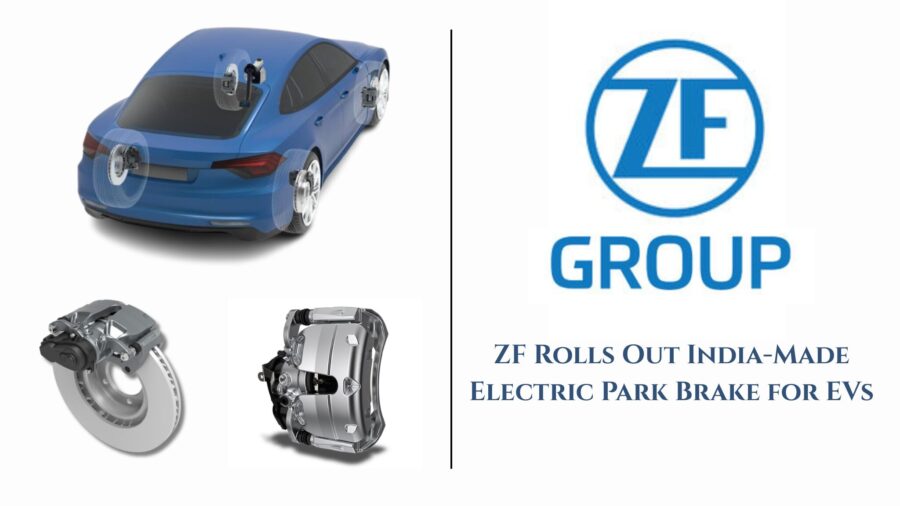Overview: What’s the Buzz About ZF’s EPB in India?
- ZF India kicks off local production of its Electric Park Brake (EPB) for a top Indian EV platform.
- First-ever SOP (Start of Production) for EPB systems in Indian passenger vehicles.
- Enhances fuel efficiency, safety, and driving comfort while supporting electrification goals.
- Modular architecture makes it scalable across passenger cars and light commercial vehicles.
Intro: ZF is Gearing Up to Revolutionize Indian Mobility
ZF is set to revolutionize the Indian automotive landscape by introducing its Electric Park Brake (EPB) system — a first-of-its-kind move for the company in India’s passenger vehicle segment. With production kicking off for a major Indian OEM’s brand-new EV platform, this marks ZF’s debut integration of the EPB in a locally manufactured electric car. It’s not just another brake system — it’s a bold step toward next-gen vehicle safety, comfort, and electrification tailored specifically for Indian roads. So, let’s break it down.
What Is the Electric Park Brake (EPB)?
Unlike traditional handbrakes that rely on mechanical levers and cables, ZF’s EPB is fully electronic. At the press of a button, it activates the rear brakes — no hand-pulling or pedal stomping needed.
But it’s not just about parking. This system is fully integrated into the vehicle’s brake architecture, offering:
- Dynamic actuation for emergency braking
- Two-wheel ABS functionality
- Brake pad wear sensing
- Lower drag for better energy efficiency
It’s smarter, safer, and clearly tailored for the modern electric vehicle ecosystem.
Why It Matters for India
This isn’t just tech for tech’s sake. ZF’s EPB supports:
- India’s push toward electrification
- Enhanced road safety standards
- Improved vehicle performance & comfort
It fits right into India’s “Make in India for India and the World” vision. And since it’s being locally produced in Pune, it reduces dependency on imports while still meeting global quality benchmarks. Naturally, this makes it more cost-effective!
According to Akash Passey, President, ZF India, this SOP (start of production) marks a milestone in empowering Indian automakers with world-class solutions.
Versatility & Scalability — Built to Fit All
The best part? ZF’s EPB is modular and scalable.
That means it isn’t just for premium EVs — it can be used across:
- Passenger cars
- Light commercial vehicles
- Light trucks
For Indian OEMs, that’s a big win. They can now integrate this system across various models without needing complex design changes.
Quick Recap: What Does ZF’s EPB Offer?
| Feature | Why It Matters |
|---|---|
| Button-activated park brake | Easy and convenient to use |
| Integrated braking system | Safer and more efficient braking during emergencies |
| Brake pad wear sensing | Improves maintenance and safety |
| Low drag architecture | Better fuel economy and range for EVs |
| Two-wheel ABS stops | Enhanced emergency braking |
| Modular design | Adaptable across vehicle types |
| Local production (Pune) | Supports “Make in India” strategy |
| Scalable to commercial use | Flexible for OEMs to design for various vehicle classes |
Conclusion: This is More Than Just a Parking Brake
ZF’s launch of the Electric Park Brake system in India isn’t just a milestone — it’s a sign of where the industry is headed. Smarter systems, safer roads, and cleaner vehicles. With local production now underway, Indian OEMs have access to globally trusted braking technology that not only enhances the driving experience but also plays a key role in the country’s shift towards electrification and intelligent vehicle systems.
In short: ZF is not just parking here — it’s powering forward.

